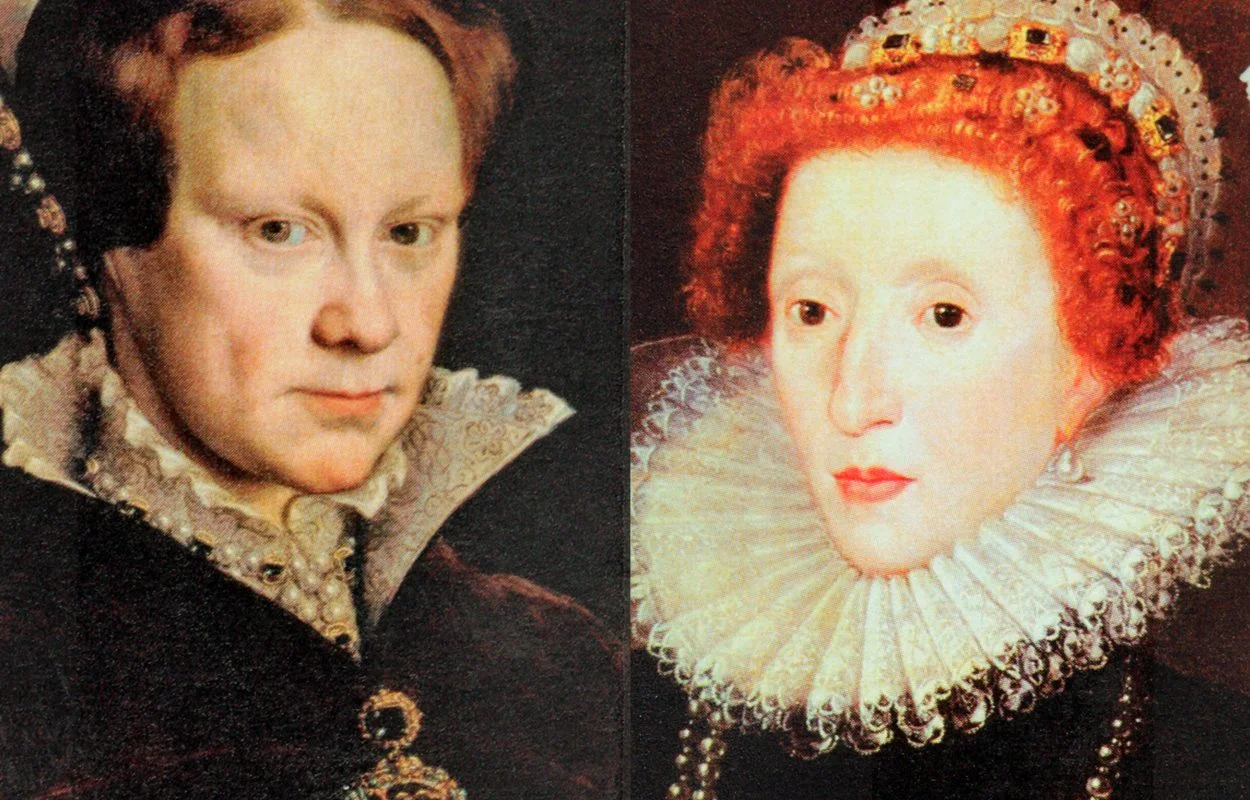The surviving children of the heir-obsessed king Henry VIII were not only girls, but were both declared illegitimate.
Mary Tudor and her younger half-sister Elizabeth were never expected to reign as Queens, however, the inability of Henry and his many wives to produce a son that lived long enough to reign, made their accession more and more likely.
Mary was the only daughter (and only surviving child) of Catherine of Aragon and Henry VIII. Raised by her strong-willed Catholic mother, Mary grew up in a loving environment, doted upon as the jewel of her father’s eye.
Princess Mary was highly educated, spoke several languages, was an accomplished singer and dancer, and an extremely pious Catholic. However, as it became more apparent that Catherine would be unable to bear Henry a son, Henry’s attentions turned elsewhere, casting Catherine aside in a decade long attempt at annulment so he could marry Catherine’s lady in waiting, Anne Boleyn.
Tired of waiting for the Pope to allow the divorce, Henry denounced the Catholic church and named himself the Head of the Church of England, thereby allowing himself the divorce he sought and the marriage of the already pregnant Anne to take place.
Just weeks after her coronation as queen, Anne gave birth to Elizabeth. During her extremely trying adolescent time, 17-year-old Mary was disallowed to see her mother unless they both agreed to support the annulment and admit that Anne was the rightful queen. Catherine stayed strong in her resolve and never agreed. She died in 1536 having never being allowed to see her daughter again.
Once married to Anne, Mary became another victim in her father’s plot to have a son. She was declared illegitimate, stripped of her royal possessions, tutors and servants, and was forced to be a servant in the household of her new baby half-sister Elizabeth.
Despite the disappointment of not being born a boy, Elizabeth became the focus of Henry and his new Queen as Mary was cast aside. Elizabeth was named the High and Mighty Princess of England. She was shown off around court and doted upon as the princess she was. Raised as a Protestant in Henry’s new Church of England, Elizabeth stayed true to her mother’s religion for the rest of her life.
However, her status as princess was short lived, as her mother was executed for treason in 1536. Just days later, Henry married his third wife, Jane Seymour, which changed the line of succession and led to Elizabeth being stripped of her titles, just as her sister Mary had been.
Only upon the urging of her advisors and fear of what her father might do to her, Mary finally recognised Henry as head of the Church of England and declared that she was illegitimate.
In 1537, Edward was born to Queen Jane, ultimately tossing Mary and Elizabeth aside in the eyes of their father and the court. Quite fond of Jane and her kindness, Mary and Elizabeth were devastated when Jane died less than two weeks after Edwards birth.
Having a brother who will become king, Mary and Elizabeth had nothing to fear from each other’s existence or claim to the throne. Young Elizabeth grew to love her older sister and they regularly spent time together. Upon urging from Jane prior to her passing, Mary was invited back to court to become reacquainted with her father, while Elizabeth was to live in the household with her baby brother Edward.
With the death of Henry in 1547, nine-year-old Edward was crowned, although the realm was governed by a regency council because he never reached maturity, having died only 6 years after his father.
Before his death, the regency council drew up a “Devise for the Succession” to prevent the country from returning to Catholicism. Edward named his first cousin once removed, Lady Jane Grey, as his heir, excluding his half-sisters, Mary and Elizabeth.
This decision was disputed following Edward’s death, and Jane was deposed by Mary nine days after becoming queen. With Elizabeth at her side, Mary marched into London and took the crown. She knew that Elizabeth supported her claim, however, she could also be a Protestant rival.
Mary turned her attention to finding a husband and producing an heir, which would prevent the Protestant Elizabeth (still next-in-line under the terms of Henry VIII’s will and the Act of Succession of 1544) from succeeding to the throne.
Mary married of Phillip of Spain, leading to fear by her subjects that England would fall under the shadow and control of the Catholic foreign superpower that was Spain. Soon a plot to overthrow Mary and put Elizabeth on the throne was hatched.
The plot (know as Wyatt’s Rebellion) was led by Sir Thomas Wyatt and other fervent Protestants. The plot was quickly foiled, and all the ring leaders were put to death. Elizabeth, suspected of being involved, was questioned by the privy council and thrown in the tower. Mary had her death warrant in hand but decided to spare her life, imprisoning Elizabeth for several months.
By 1554, Catholicism was restored and heresy acts returned, leading to hundreds of Protestants being burned alive in punishment. Thus, Mary became forever know as ‘Bloody Mary’.
A suspected pregnancy gave Mary the hope of a Catholic succession, but no heir was ever born. The phantom pregnancy was ultimately the end of Mary’s power. Embarrassed and angry, Phillip left Mary to return to Spain. With no heir on the horizon, it became clear that Elizabeth would become queen.
Mary’s declining health forced her to summon Elizabeth, informing Elizabeth that that upon her death, she would be the new queen. Attempts to convince Elizabeth to continue with the Catholic traditions were unsuccessful and on November 17th, 1558, Mary died.
Elizabeth would go on to rule, unmarried, for the next 45 years. Her rule was known as a revolutionary ‘Golden Age’.
Written by Julie St Jean
Header Image Credit : Shutterstock





